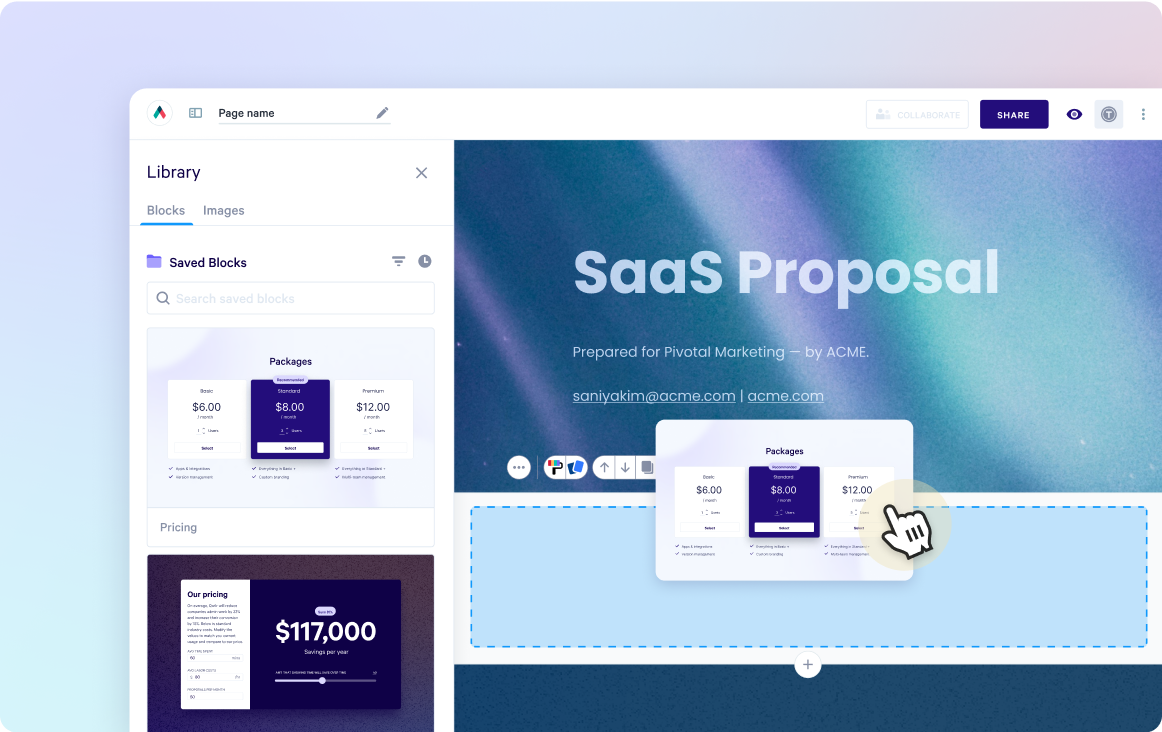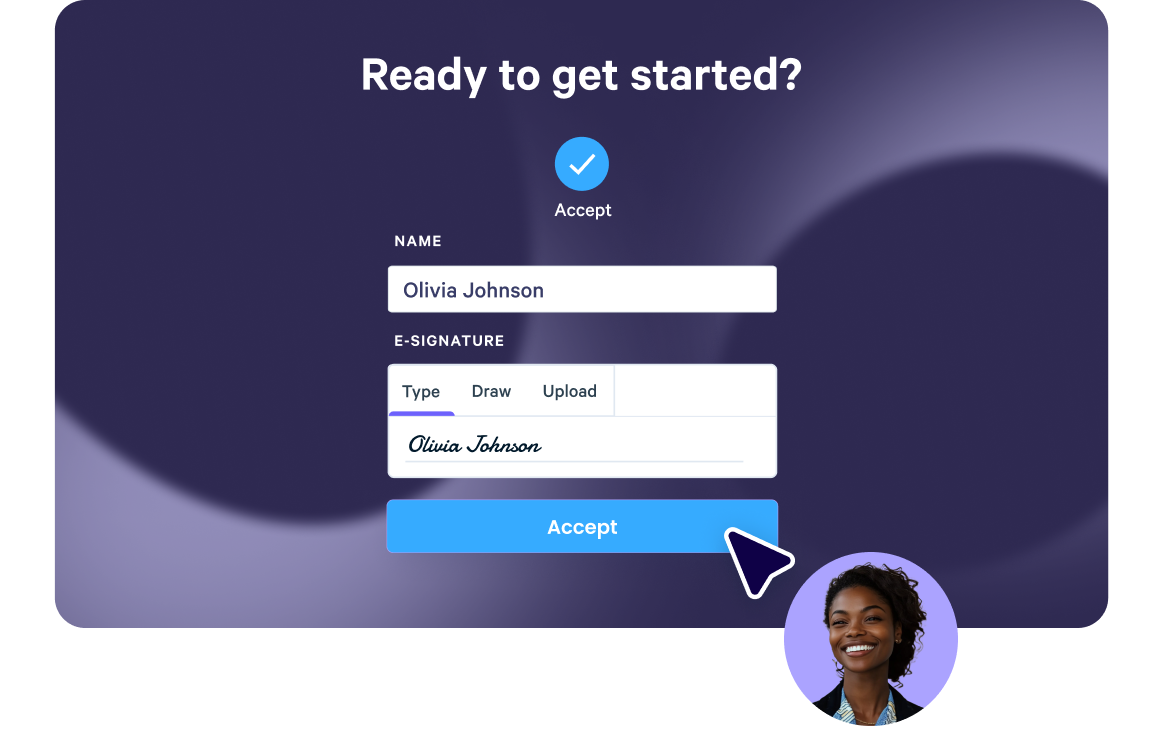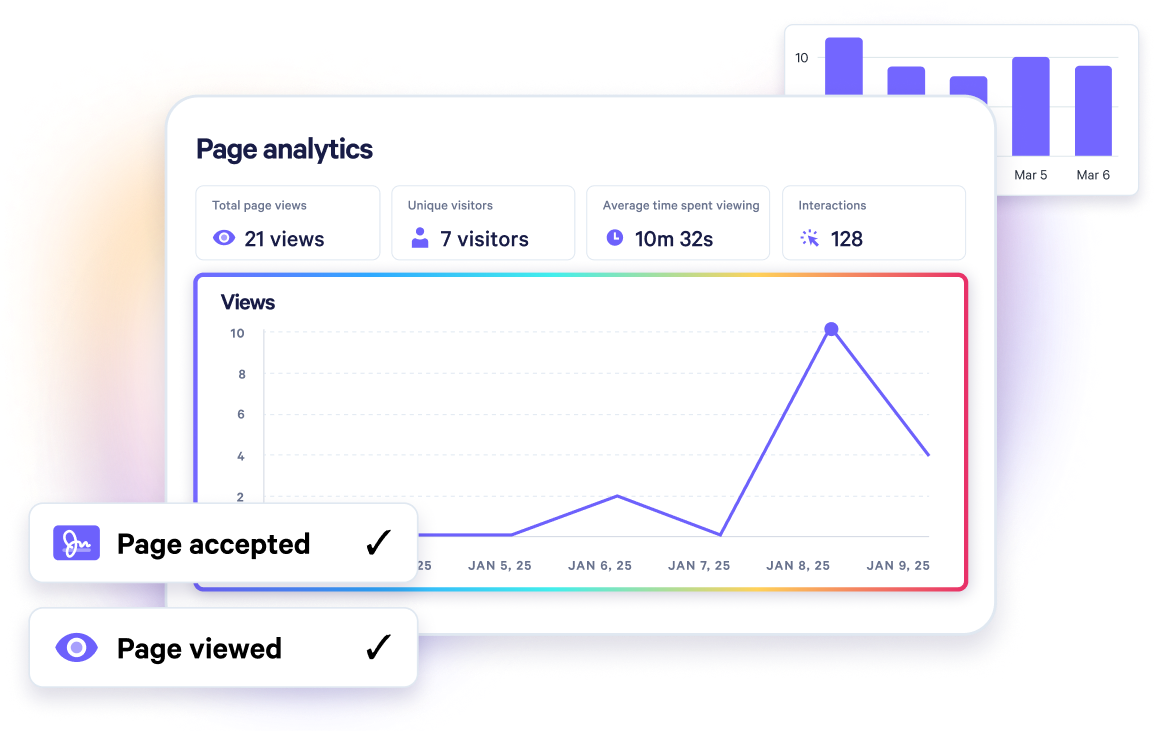Sales Proof of Concept Template
Demonstrate your solution's value with our effective Proof of Concept Template – create a detailed and professional proof of concept for prospects.

About this template
Impress the entire buying committee and manage complex enterprise sales cycles with an interactive and easy-to-use Enterprise Sales template. Our template ensures a seamless buying experience, helping your sales representatives close complex deals and win more business.
What's included?
- Overview
- Timeline of POC
- Success criteria
- Investment
- Solution
- Next steps
- ROI calculations
- Get started
- Contact us
- Book a meeting
Why Qwilr?
Design interactive proposals
Impress buyers with interactive proposals that stand out. Qwilr’s drag-and-drop editor makes it easy to create on-brand, stunning collateral — no design skills needed. Add videos, dynamic pricing, and ROI calculators to deliver a unique experience, while automated brand customizations ensure every proposal looks professional.

Built-in e-sign functionality
Combine stunning proposals, plain-text agreements, and secure e-signatures in one tool. Add print-friendly agreements alongside dynamic content and collect legally compliant e-signatures with ease. Track progress, capture multiple signatures, and close deals faster with Qwilr’s integrated e-sign functionality.

Real-time proposal analytics
Qwilr’s analytics provide full visibility into buyer engagement. Track when proposals are opened, signed, or shared, and get instant notifications for key buyer activities. See what buyers click on, how they engage, and prioritize follow-ups based on real-time insights—all designed to help close deals faster.

Templates for every use case
Explore templates for sales, marketing, customer success, sales enablement and more.
Explore sales process templatesFrequently asked questions
A Proof of Concept is used by sales representatives to demonstrate how their products and services respond to a particular customer need. This sales methodology entails a demonstration of a product or service, underlining its financial feasibility. Ultimately, a Proof of Concept is the first step to determine whether an idea is worth pursuing, taking into account financial viability, potential obstacles, resources needed and a potential client’s timeline.
Proof of Concept templates can be used to identify the value of a product vis-a-vis customer use cases, offering a clear overview on costs, time frames, parameters, and requirements of product development.
A Proof of Concept is often used interchangeably with prototypes and Minimal Viable Products (MVP), however, key distinctions exist. A Proof of Concept is ultimately designed to determine whether an idea is feasible before developing a product, whereas a Prototype serves as a model of a product that can be tested, highlighting exactly how it works.
Minimal Viable Product (MVP), by contrast, is simply a refined version of a prototype, eliminating minor inefficiencies to deliver a final product. Finally, testing a Proof of Concept (PoC) is typically done before investing money and resources into a product, creating a case for its adoption based on user needs.
There are a number of reasons why it may make sense to include a Proof of Concept in your sales process. A Proof of Concept is ultimately designed to help the vendor (or seller) demonstrate their product or service’s competency. For example, if your a B2B SaaS solution that helps businesses prospect into larger enterprises, your proof of concept could be a test export of contacts/companies that demonstrates the accuracy and size of your database.
A secondary benefit of a Proof of Concept is that they help both the buyer and the seller validate that their is mutual benefit. For example, extending the above scenario, if you primarily sell in APAC but the prospecting solution is a US/UK focused platform, then a Proof of Concept can be a great way to identify early on that there in fact isn’t a good fit by directly diving into the practicalities of the solution.
There are five basic steps sales representatives must follow before developing a Proof of Concept.
- Demonstrate a need for the product: Sales reps must first establish a need for their product or service, identifying a target market and pain points.
- Brainstorming: Once potential pain points have been identified, sales teams can then begin brainstorming feasible solutions before developing a Proof of Concept.
- Evaluation: Is the solution feasible financially and can it be done according to the customer’s timeline?
- Proof of Concept Design: Create a viable Proof of Concept that addresses a lead’s business needs, leveraging customer feedback.
- Presentation: The finalized Proof of Concept template is presented to relevant stakeholders for approval, confirming its viability.
There are typically four steps involved when writing a Proof of Concept. Following these steps will increase the likelihood of closing more deals and winning more business with successful Proof of Concept templates. Here are the four steps to writing a Proof of Concept.
- Identify the problem you are trying to solve: How can your product or service solve a client’s problem, and is there a real need for it?
- Identify resources needed: Create an extensive list of all the resources you’ll need to successfully deploy the product. This helps businesses gain a better understanding of the overall cost of the project.
- Identify success metrics and KPIs: Simply put, what does a successful product deployment look like?
- Identify a timeline: When should the client expect the product to be delivered by?




